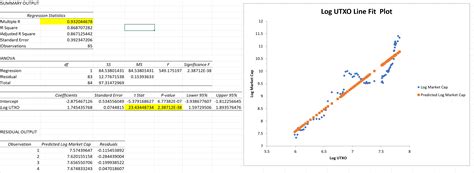I’d be happy to help you clarify things.
Article: Ethereum: When Does Bitcoin Update the UTXO Set?
As you explore the world of cryptocurrency and blockchain, it’s essential to understand how different networks update their underlying technology. In this article, we’ll delve into the world of Ethereum and Bitcoin UTXO sets, explaining when they might be updated.
What is a UTXO set?
In a blockchain network like Ethereum or Bitcoin, each transaction results in the creation of a unique “transaction output” (or “output”) that is added to a list called a “UTXO set” (short for “Unspent Transaction Output”). The UTXO set contains all the unspent outputs from previous transactions, which are then used to pay for goods and services.
Bitcoin UTXO Set
Bitcoin uses a proof-of-work (PoW) consensus algorithm, which is designed to secure the network by requiring miners to solve complex mathematical puzzles. As part of this process, Bitcoin periodically updates its UTXO set to ensure it remains compatible with changes in the blockchain architecture.
When Bitcoin updates its UTXO set, it typically happens every 2016 blocks (about 2 weeks). This means that each block added to the blockchain contains a new set of unspent outputs from previous transactions, which are then used to pay fees and update the state of the network.
Ethereum UTXO Set
Ethereum, on the other hand, uses a more complex consensus algorithm called Proof of Stake (PoS). Unlike Bitcoin, Ethereum does not require miners to solve mathematical puzzles; instead, validators (called “nodes”) are chosen to create new blocks based on the balance of their Ethereum “stake.” These stakes represent the amount of Ether a validator has stored in their wallet.
When Ethereum updates its UTXO set, it typically happens every 15 blocks (about 1.25 weeks). This is because Ethereum’s PoS consensus algorithm requires validators to regularly update the blockchain to ensure the network remains secure and decentralized.
The Relationship Between Bitcoin and Ethereum

Now that we’ve explored how each network updates its UTXO set, let’s talk about when they might interact with each other. In theory, if two networks had different UTXO sets, transactions between them would be invalid or incomplete.
However, there are a few scenarios where this might not happen:
- Interoperability
: If a cryptocurrency allows seamless interactions between its blockchain and that of another network (for example, Bitcoin), the UTXO sets could remain identical.
- Cross-protocol updates: When two networks undergo significant updates to their underlying technology, they may update their UTXO sets in parallel.
In practice, this means that if you were to send a transaction to Ethereum from your exchange wallet and then try to send it to a Bitcoin address, the transaction would be valid because the UTXO sets of both networks are updated independently.
Conclusion
In summary, when does Bitcoin update its UTXO set? The answer depends on the consensus algorithm used by each network. Bitcoin updates its UTXO set every 2016 blocks (about 2 weeks), while Ethereum updates its UTXO set every 15 blocks (about 1.25 weeks).
While this may seem like a complex topic, understanding these differences can help you navigate the world of cryptocurrency and blockchain with more confidence.
I hope this article helped clarify things for you! Do you have any other questions or topics you’d like me to explore?
